Visit to the Wonderful Archaeological Museum of Chania
Written by Claire Messenger, Manager, International Training Programme
The Archaeological Museum of Chania is now in a new home – an amazing new building – situated in a suburb of Chania.
Chania, a city on the north-west coast of Crete, has an important, global history and the museum houses and displays a collection of finds from excavations around the city over the last 50 years. The collection focuses on the history of the city and the region from the neolithic period through to the Roman Empire.
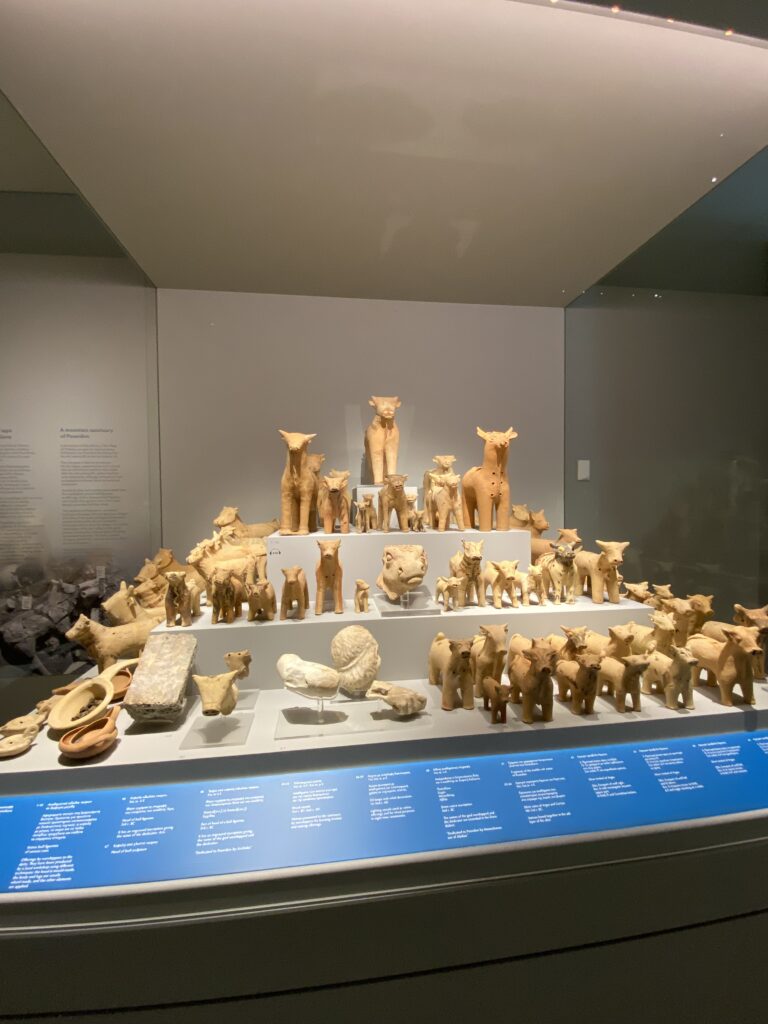
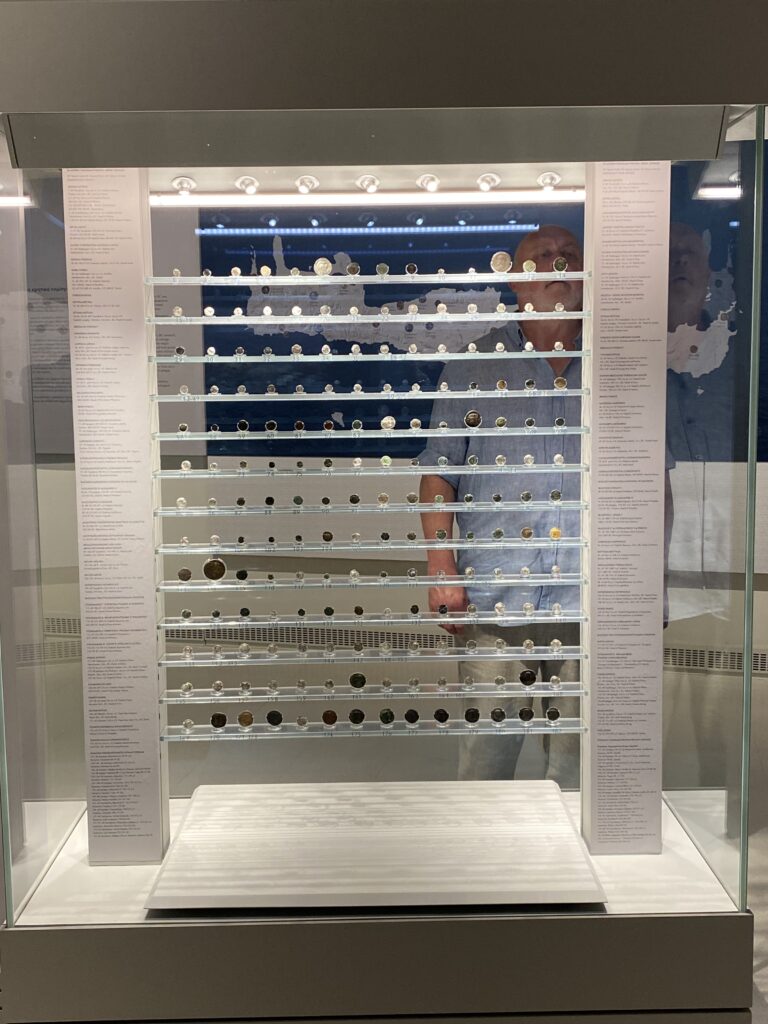
The Archaeological Museum of Chania was founded in 1963 and up until 2020 it was housed in the former Venetian Monastery of Agios Fragiskos in the Old Town of Chania. It closed in 2021 and moved to its wonderful new location giving the collections more space for it’s 3,500 objects. The contemporary new museum, as well as looking incredible, has been designed and built on bioclimatic principles with sustainability at its core.
Visit the museum website here.
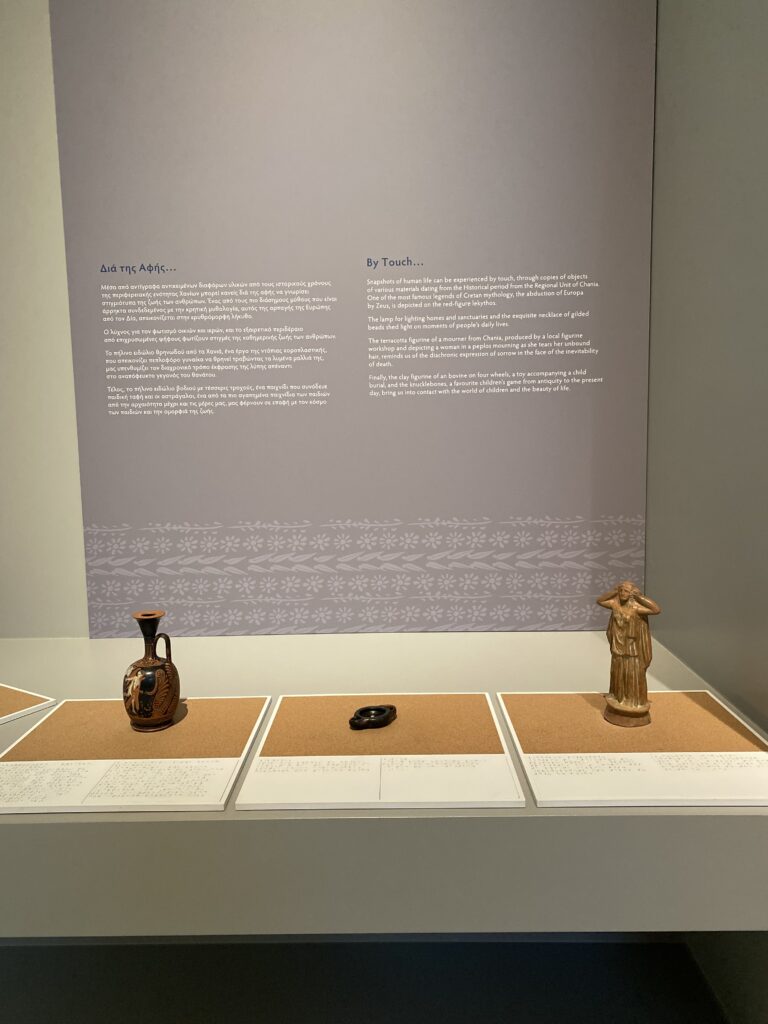
The museum’s permanent collection is shown in three main halls on the ground floor and one more on the first floor, and displays its collection in a creative and thoughtful way. The museum uses two key methods of interpretation to help make the fascinating history and development of the area both informative and engaging. Firstly, the digital displays, around the galleries and in the cases, are an excellent way of sharing information on the collections. The displays change and show additional information to that on the labels and panels – including maps and images – which all support the curators telling the story of the collections. This is a great way to give the audience more context without over-crowding the cases or having labels and panels that are too ‘wordy’.
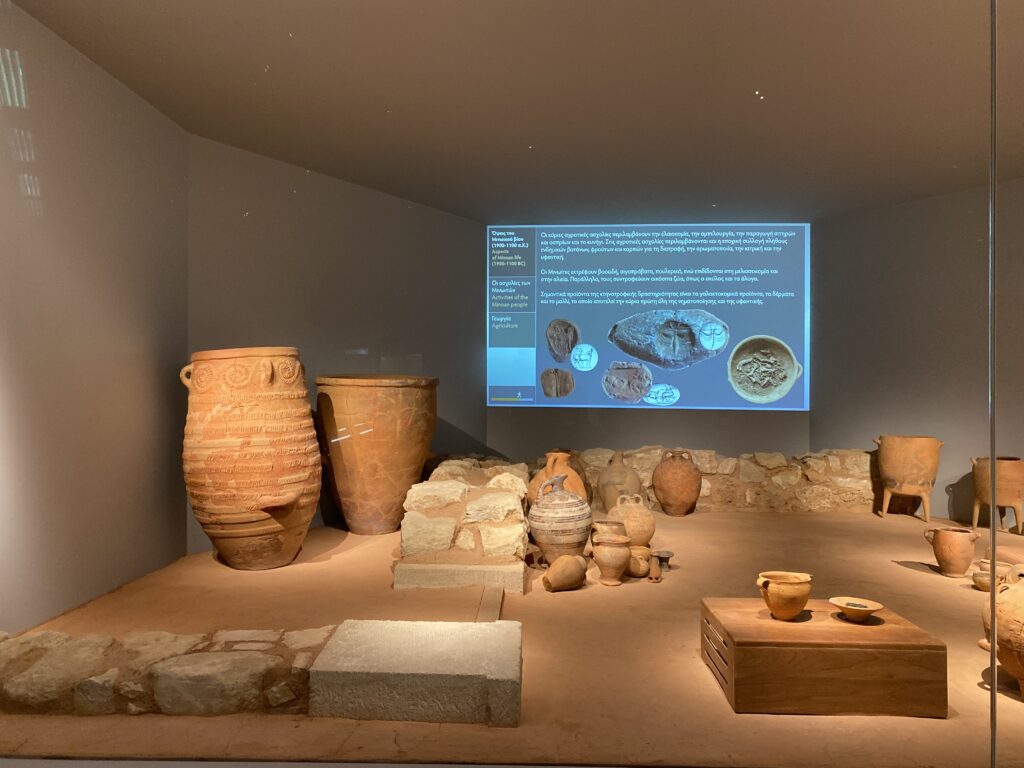
I also particularly enjoyed the reconstructions used around the museum. This interesting way to display the collections provide an additional layer of interpretation and help tell a story without the need for more text. Reconstructions included a deconstructed house – the “Miser’s” House – destroyed by an earthquake and several burials. The burials were particularly engaging as the human remains were removed and not on display, but the outline of the body was highlighted to show its position and the objects which shared the burial space could be placed on or around the ‘body’.
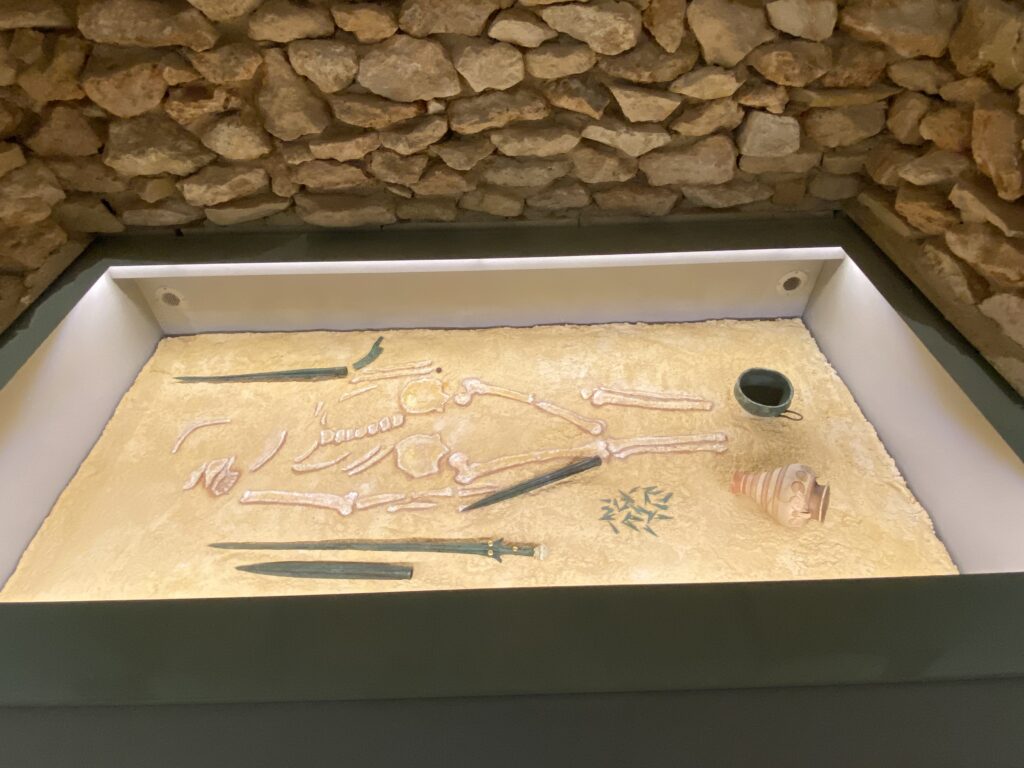
I was delighted to be able to visit this new museum and – always a good sign – I can’t wait to go back.
